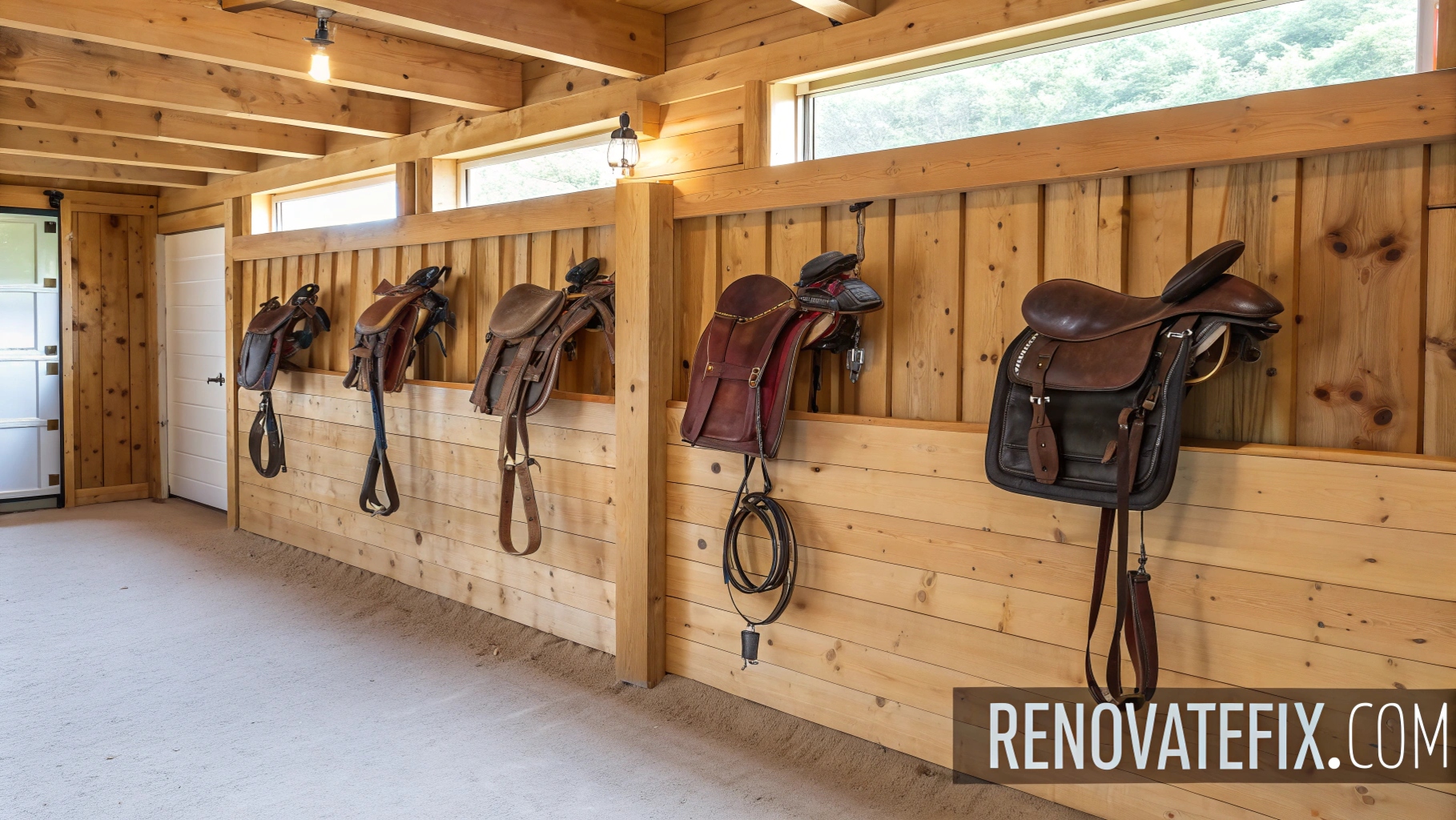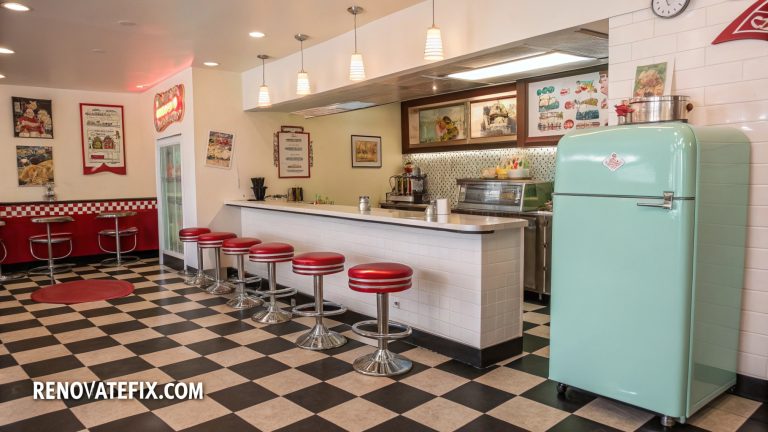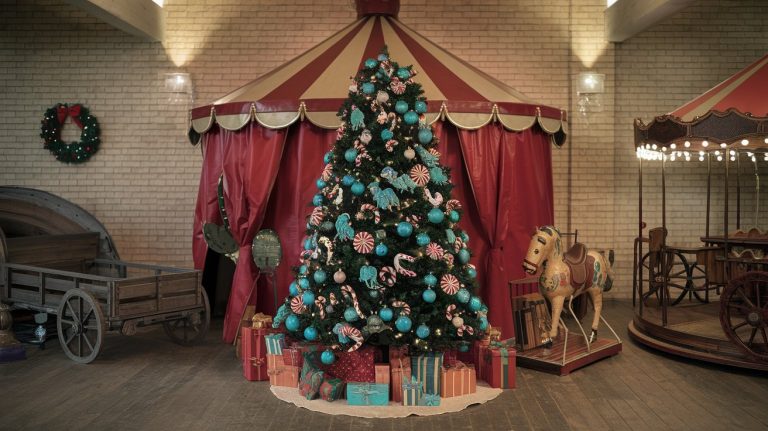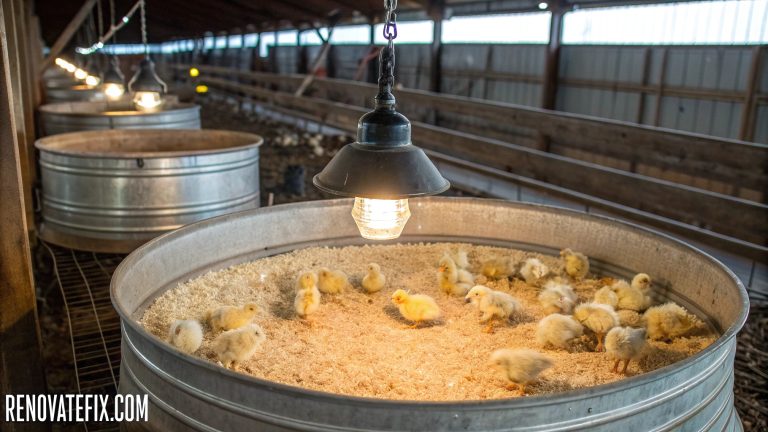Tack Room Organization Ideas: Creating an Efficient Equestrian Space
Every equestrian knows that a well-organized tack room is essential for efficient barn management.
Whether you have a small closet or a spacious dedicated room, proper organization not only saves valuable time but also extends the life of your expensive equipment.
This guide presents practical and innovative solutions for managing your equestrian gear, from saddles and bridles to grooming supplies and riding attire.
These ideas are adaptable to spaces of any size and can be implemented on various budgets, helping you create a functional and attractive area that meets your specific needs.
Tack Room Organization Ideas
1. Vertical Saddle Racks
Maximize wall space by mounting adjustable saddle racks vertically. This arrangement keeps saddles off the ground, preventing damage and freeing up floor area for other storage needs.
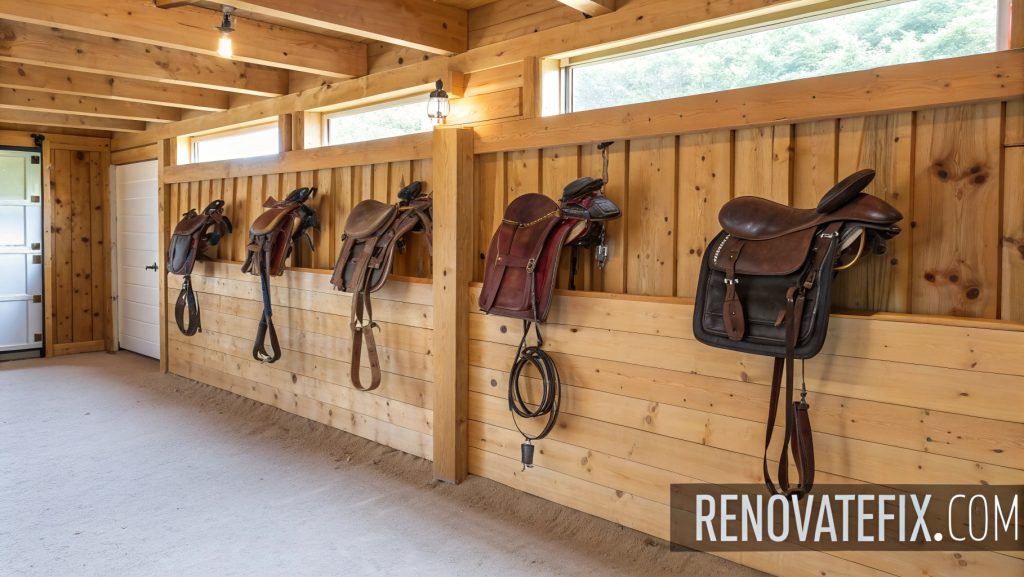
Vertical positioning allows air circulation around leather components, reducing mildew risk and extending saddle longevity.
Each rack can be labeled with horse or rider names for quick identification during busy barn days.
2. Rotating Bridle Hooks
Install swiveling hooks on walls or doors for bridle storage that optimizes accessibility.
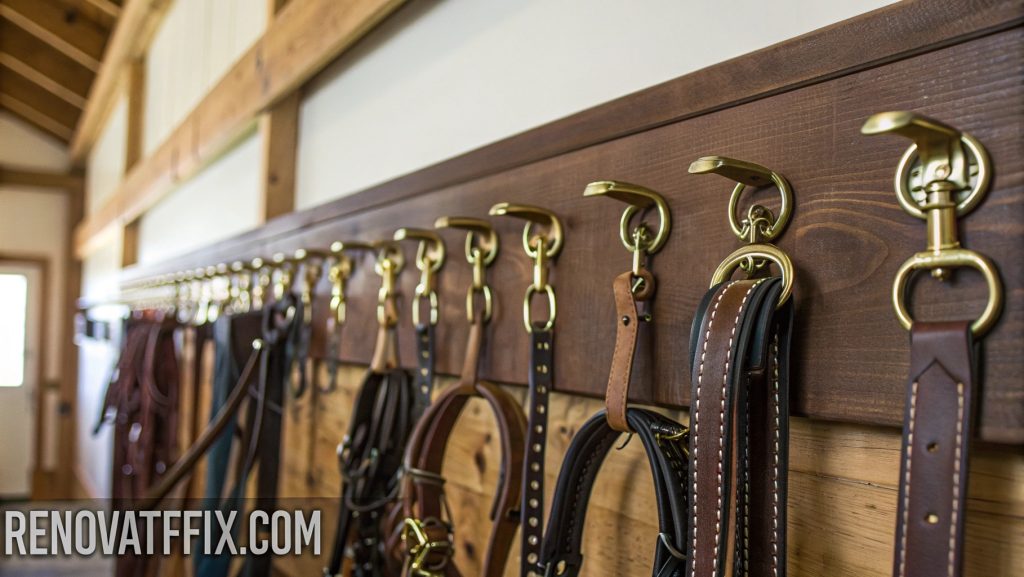
These rotating mechanisms prevent tangling and allow you to view each bridle without disturbing others nearby.
Spacing hooks adequately ensures leather straps maintain proper shape while hanging, avoiding permanent creases or weakening.
The rotation feature makes grabbing equipment quick even in cramped quarters.
3. Modular Bin Systems
Create customizable storage using stackable plastic bins coded by function, color, or horse.
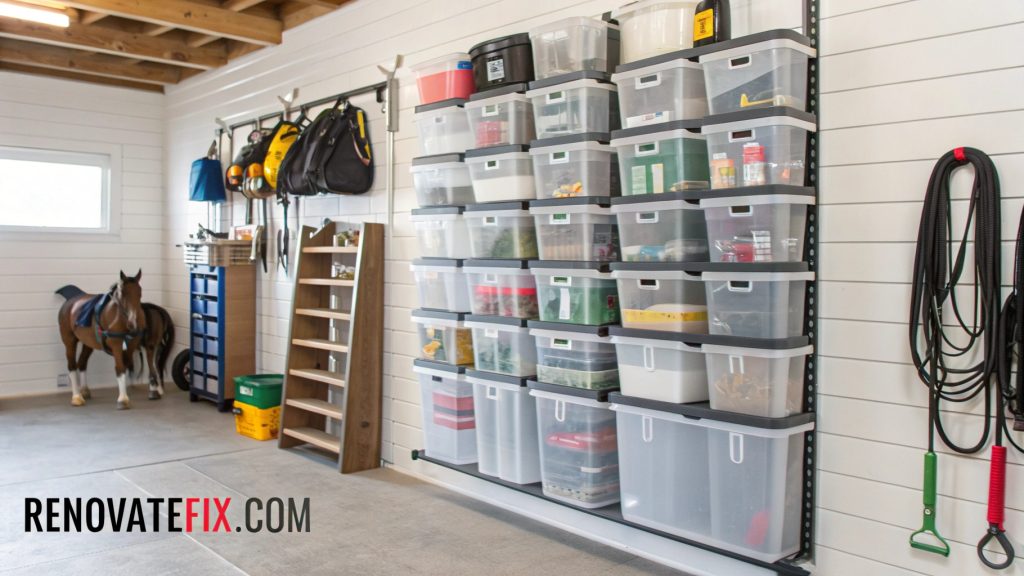
Clear containers allow instant visual inventory checks without opening lids, saving precious minutes during competition preparations.
Waterproof materials protect contents from humidity while allowing airflow through ventilation holes. Labels ensure everyone maintains organization protocol consistently throughout seasons.
4. Rolling Grooming Carts
Invest in mobile carts featuring multiple compartments designed specifically for brushes, combs, hoof picks and sprays.
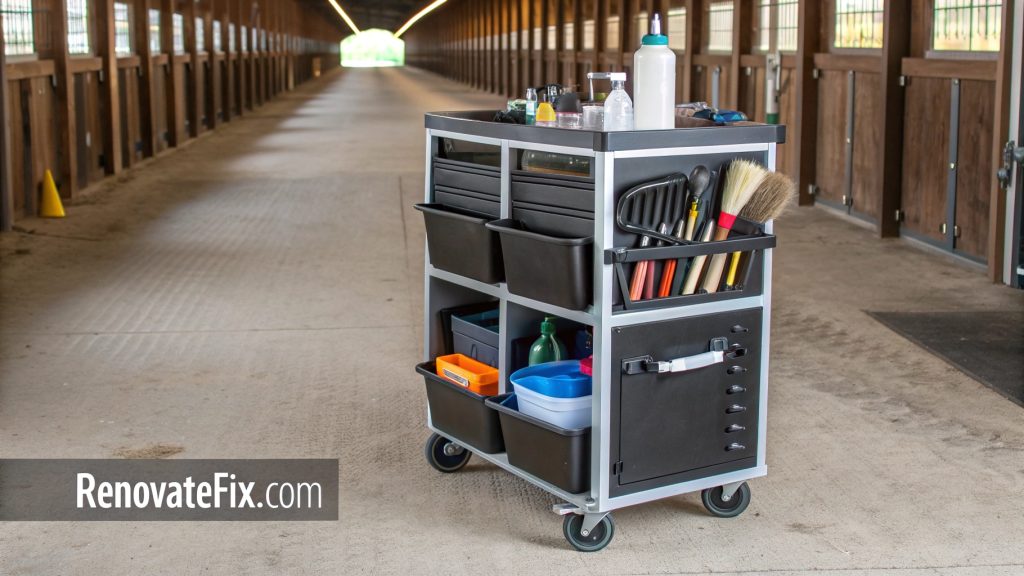
Wheels enable easy movement between stalls and grooming areas, bringing supplies directly where needed rather than carrying armloads.
Removable dividers accommodate tools of varying sizes while dedicated hooks hold hoof picks securely.
Weather-resistant construction withstands barn environments year-round.
5. Boot Drying Stations
Construct specialized racks with dowels or PVC pipes that hold riding boots upside down after wet rides.
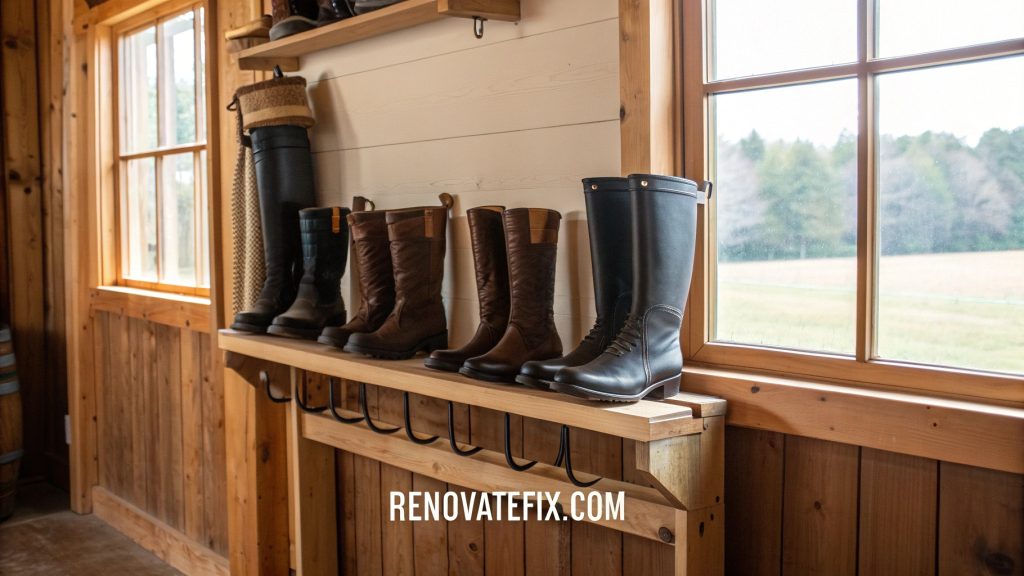
Air circulation prevents interior moisture buildup while maintaining boot shape during drying process.
Adding small fans increases air movement on particularly humid days, preventing mildew formation inside footwear.
Positioning this station near a heat source accelerates drying without damaging leather.
6. Blanket Bars
Mount sliding rails or retractable bars along walls for efficiently storing seasonal horse blankets.
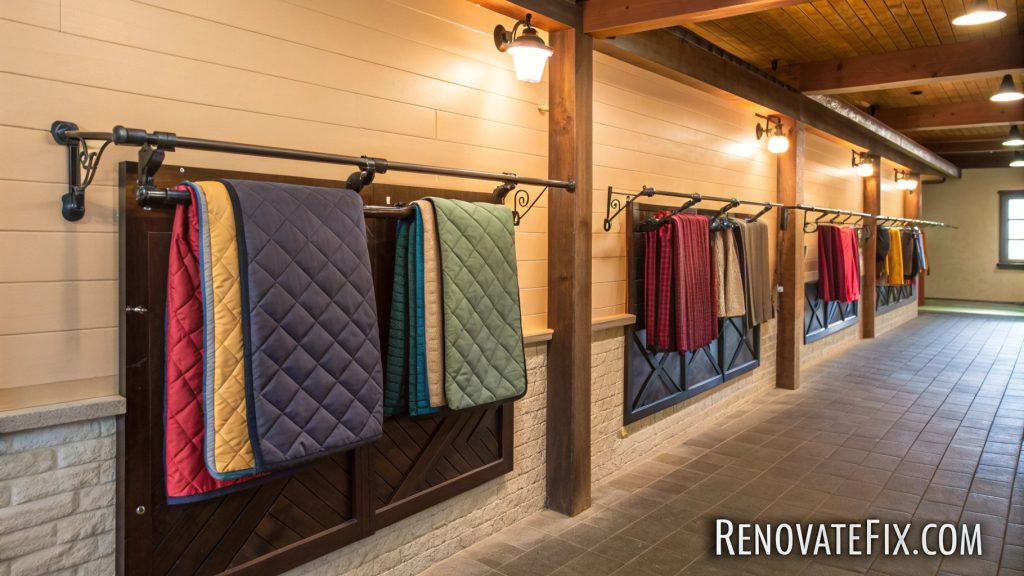
This approach prevents creasing while allowing proper airing between uses, extending fabric life significantly.
Height placement keeps blankets clean while remaining accessible without ladders or stretching.
Smooth materials prevent snags on blanket fabrics during removal or hanging procedures.
7. Pegboard Customization
Utilize full-wall pegboards with movable hooks, shelves, and baskets that adapt as your collection grows.
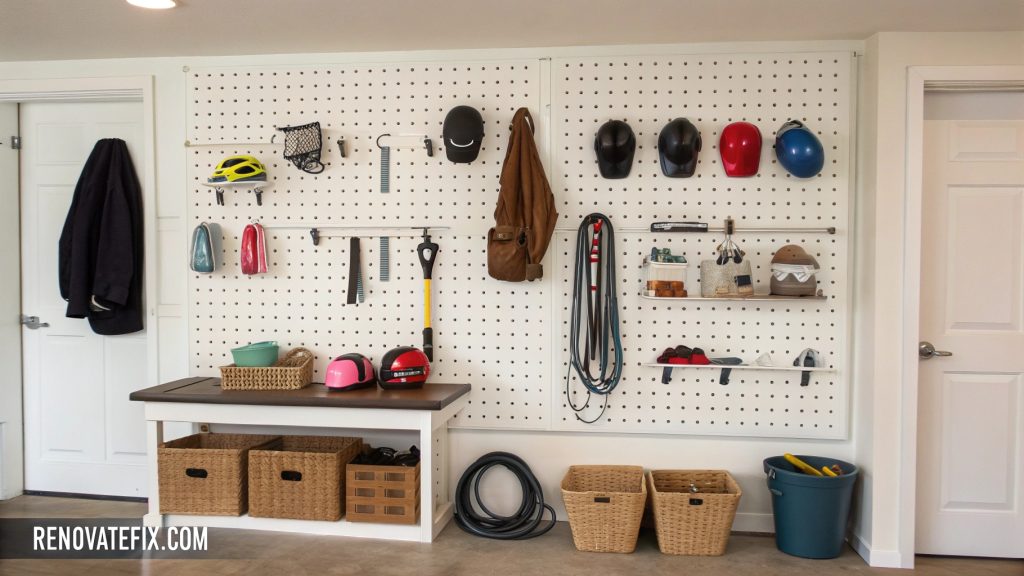
The flexibility allows repositioning components seasonally as equipment needs change throughout year.
Sturdy installation supports heavy items like leather cleaning products, helmets, or show accessories.
Outlining tool shapes directly on boards guides proper replacement after use.
8. Overhead Pulley Systems
Install mechanical pulley mechanisms for lifting and storing bulky seasonal items near ceiling areas.
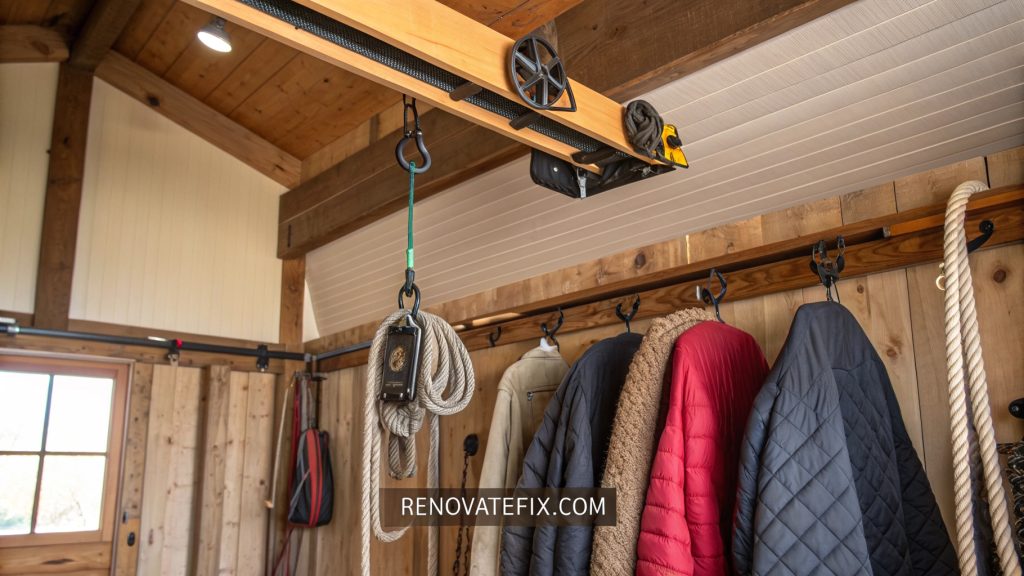
This solution reclaims valuable floor space by utilizing normally wasted overhead zones in barns.
Simple rope systems make lowering items effortless when needed without requiring ladders.
Weatherproof covers protect stored equipment from dust accumulation during off-seasons.
9. Magnetic Strip Boards
Secure metal strips along workstation walls for holding scissors, clippers, metal curry combs and other ferrous tools.
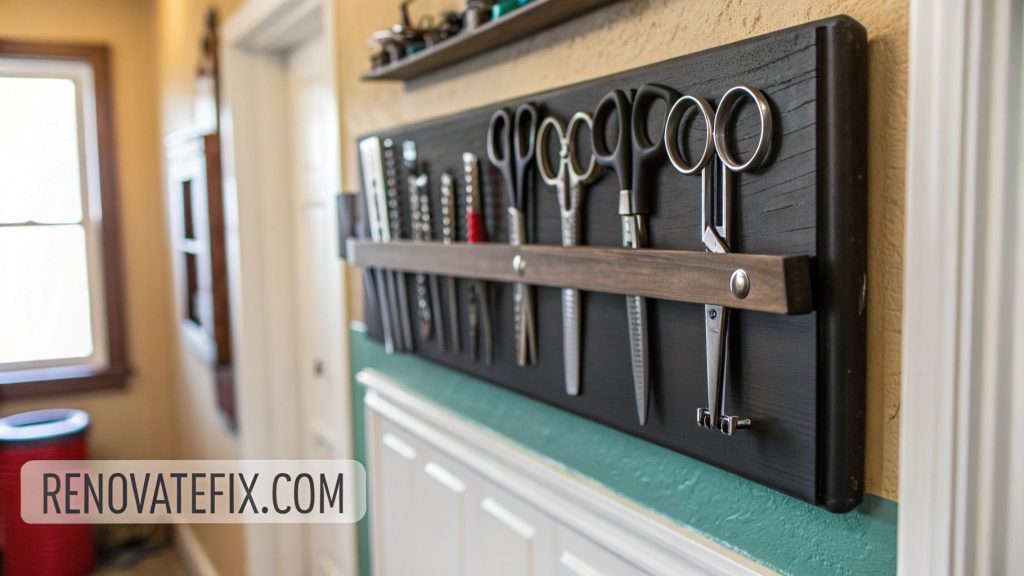
Magnets eliminate drawer rummaging when searching for small metal implements during grooming sessions.
The visible arrangement reminds handlers which tools require cleaning or maintenance after use.
Strategic placement near grooming areas speeds up daily routines considerably.
10. Drawer Dividers
Craft custom wooden or acrylic separators for drawers containing small items like bit parts, braiding bands or supplements.
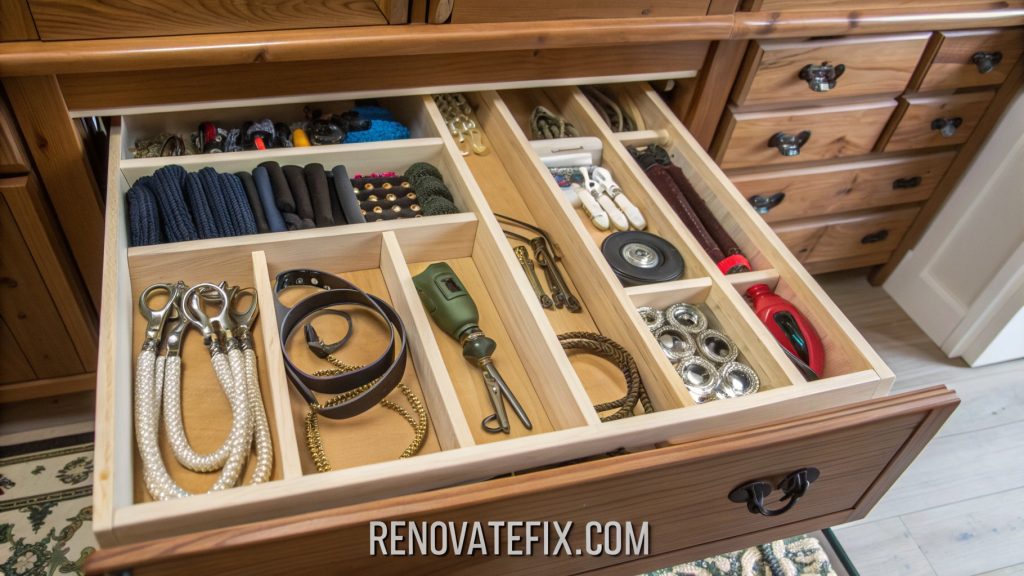
Compartmentalization prevents mixing while maximizing space efficiency within existing furniture.
Different compartment sizes accommodate various small objects logically grouped together.
Removable design allows periodic cleaning of both dividers and drawer interiors.
11. Whip and Crop Racks
Design specialized narrow slots or tubes mounted vertically for storing riding crops, lunge whips and dressage whips separately.

Vertical orientation maintains straight alignment preventing warping or bending of these precision tools.
Adequate spacing between slots prevents tangling or scratching of handles during retrieval.
Strategic placement near doorways provides convenient grab-and-go access before riding.
12. Boot Jack Stations
Designate specific areas featuring mounted boot removal tools that preserve footwear shape and prevent finger strain.
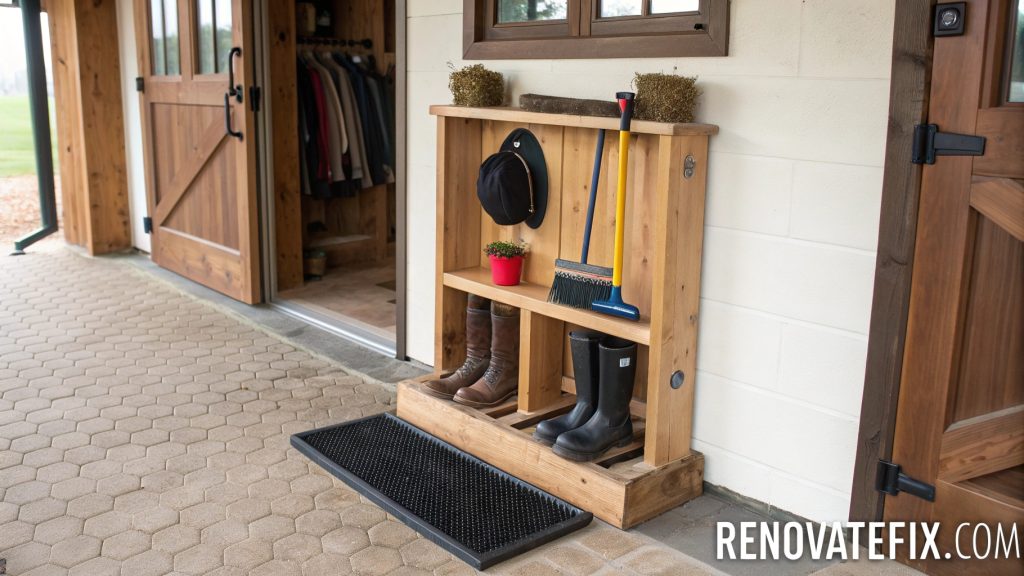
Positioning these stations near entrances encourages proper removal techniques rather than harmful foot-pushing methods.
Incorporating brushes nearby promotes immediate cleaning before storage, extending boot lifespans substantially.
Rubber mats underneath collect debris falling from boots during removal process.
13. Glass Jar Systems
Repurpose mason jars with secure lids for storing small items like horse treats, braiding bands, or medicine components.
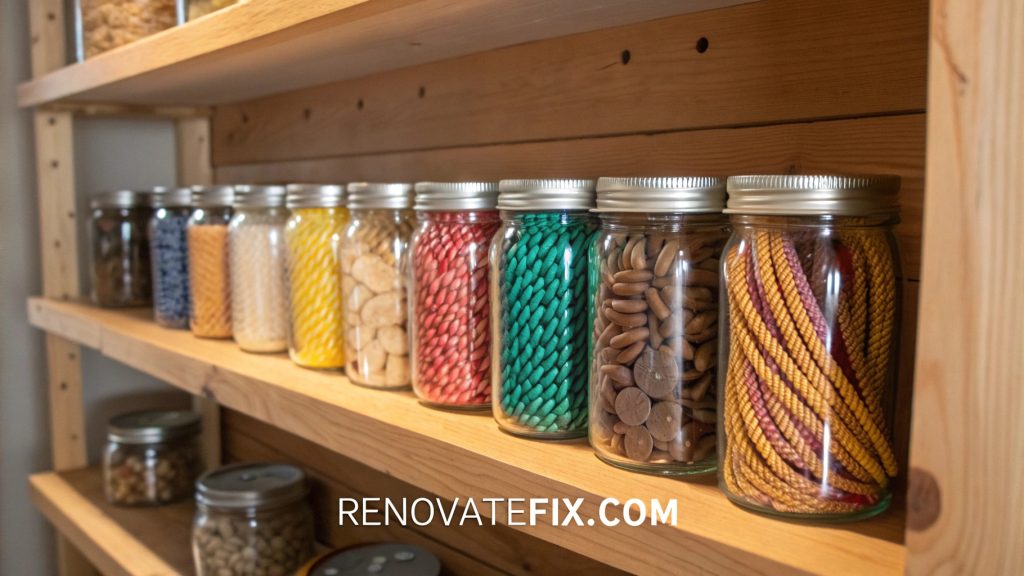
Transparent glass permits immediate content identification without opening multiple containers while searching.
Uniform jar sizes create visually appealing shelving displays while standardizing storage amounts.
Airtight seals protect contents from humidity and unwanted pests common in barn environments.
14. Helmet Display Shelves
Build dedicated shelving units with curved supports that cradle helmets without compressing interior padding materials.

Elevating helmets prevents accidental drops or kicks that compromise safety features over time.
Individual cubbies provide personal space for each rider while allowing air circulation after sweaty rides.
Adding small hooks below each shelf accommodates gloves or hairnets.
15. Multi-Hook Systems
Install cascading hook arrangements near grooming areas for hanging multiple lead ropes, lunge lines and longe whips.
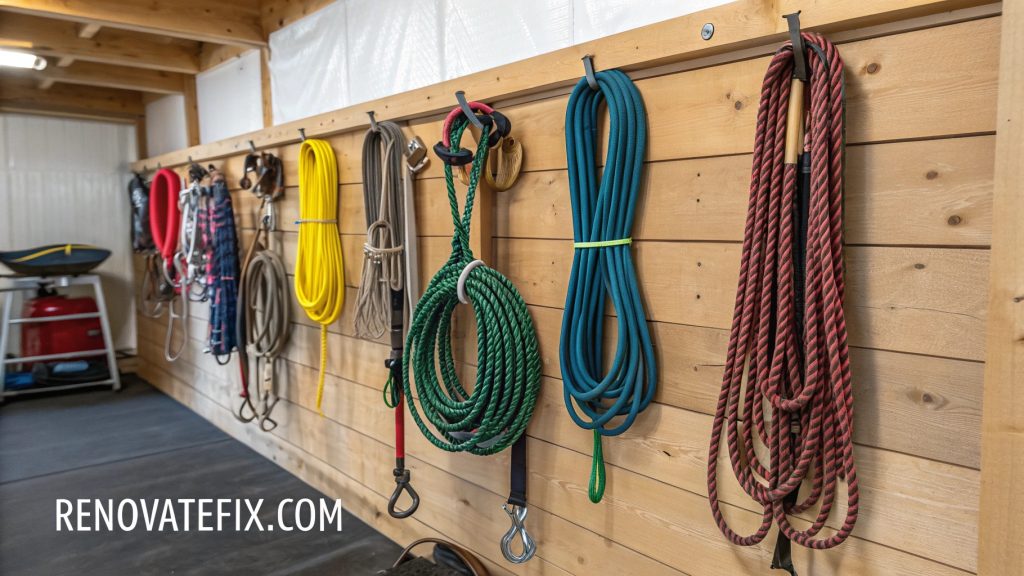
Varying hook lengths prevent floor dragging while keeping items visible for quick selection.
Staggered positioning maximizes wall capacity while preventing tangles between adjacent items.
Rubber coating on hooks protects rope materials from developing weak spots over time.
16. Bit Libraries
Construct specialized hanging racks with rounded pegs specifically sized for organizing various bits by type and function.
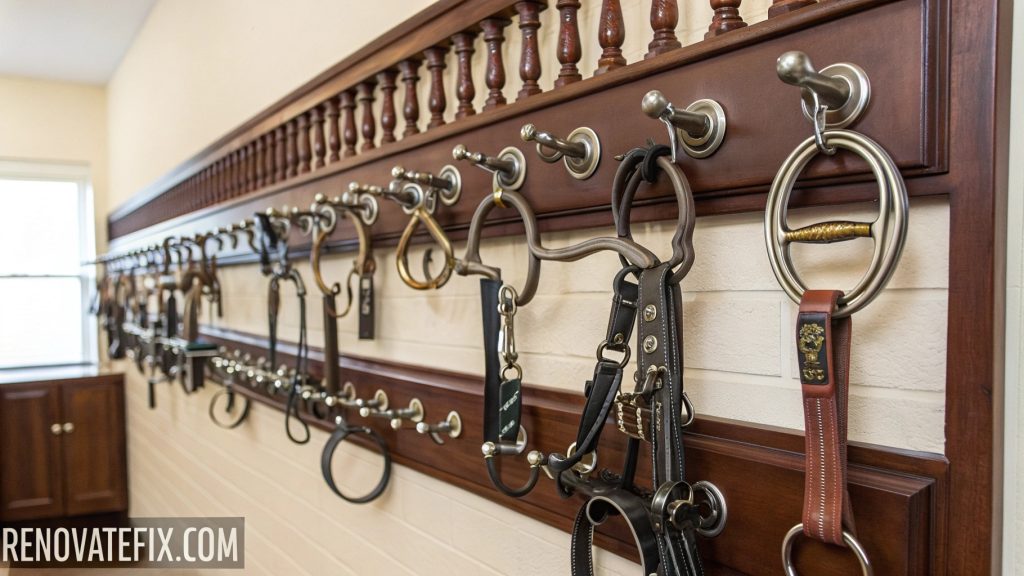
Horizontal mounting prevents metal contact damage while displaying your collection for easy selection based on training needs.
Grouping similar styles together creates visual order and simplifies locating specific bits during tack changes.
Subtle labeling underneath each peg aids in maintaining precise arrangement after cleaning sessions.
17. Feed Chart Boards
Mount dry-erase boards displaying feeding schedules, supplement protocols, and medication tracking for each horse.
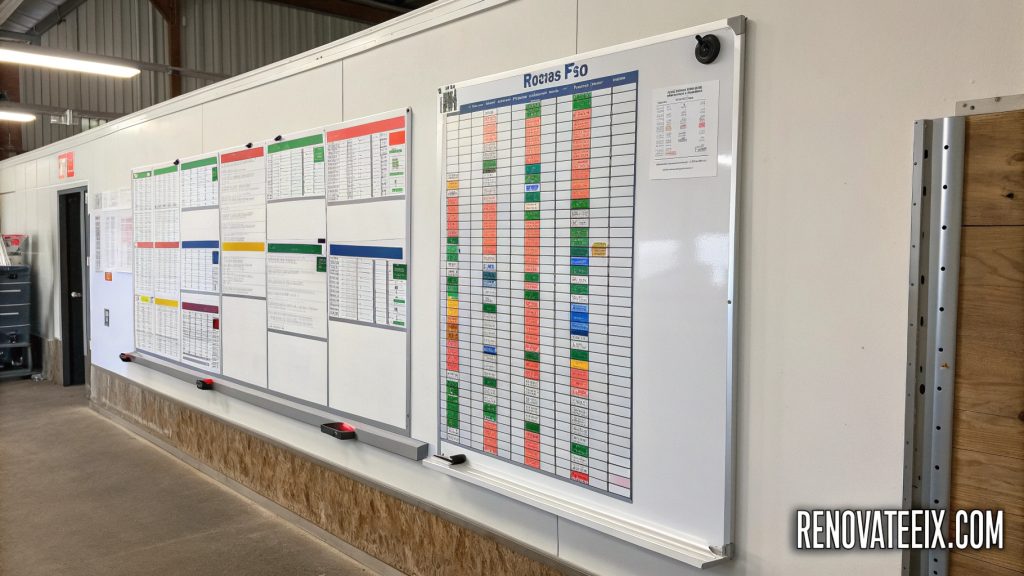
Magnetic surfaces allow attaching important documents like veterinary records or competition schedules without damaging papers.
Grid formations ensure consistent information presentation across multiple horses or feeding times.
Positioning near feed storage areas ensures instructions remain visible during meal preparations.
18. Girth Hangers
Design curved wall mounts that maintain girth shape while promoting air circulation between uses.
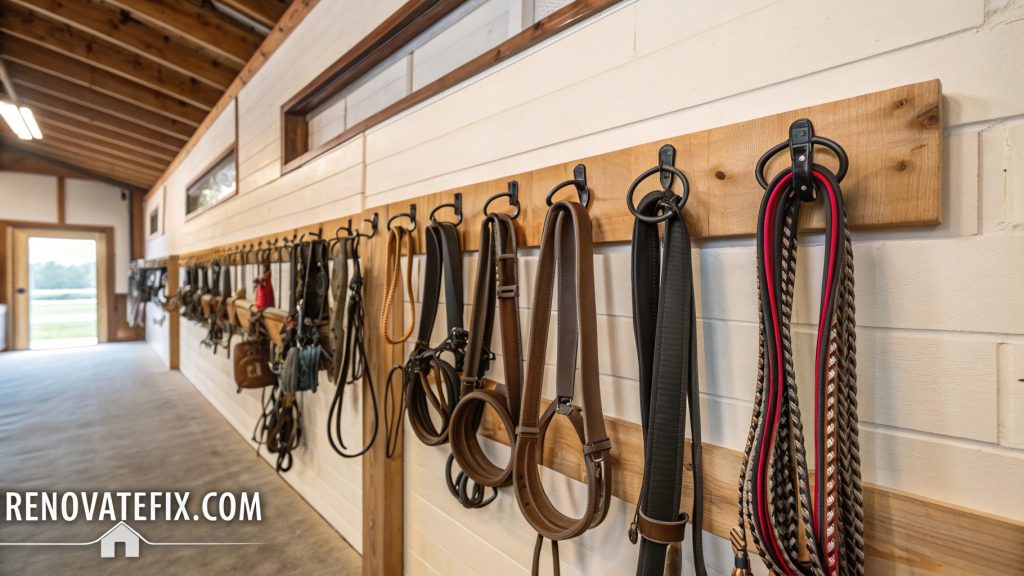
Spacing hangers adequately prevents elastic from stretching permanently when stored for extended periods.
Different sizes accommodate various girth types from ponies to draft horses within a single system.
Positioning near saddle racks creates logical workflow during tacking up procedures.
19. Wash Rack Caddies
Fashion waterproof containers with drainage holes for shampoos, conditioners, and bathing tools near washing areas.
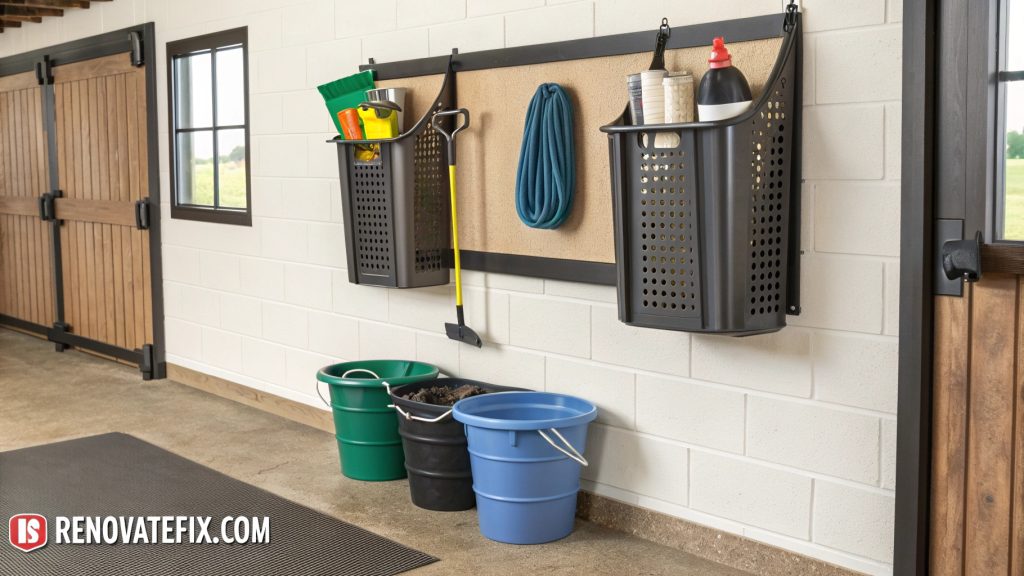
Mounting these caddies at chest height eliminates bending while handling horses during bathing sessions.
Multiple compartments separate scrubbing tools from liquid products preventing cross-contamination.
Removable inserts allow thorough cleaning of caddy components preventing mildew buildup.
20. Leather Conditioning Stations
Establish dedicated areas featuring proper lighting and ventilation for maintaining leather equipment.
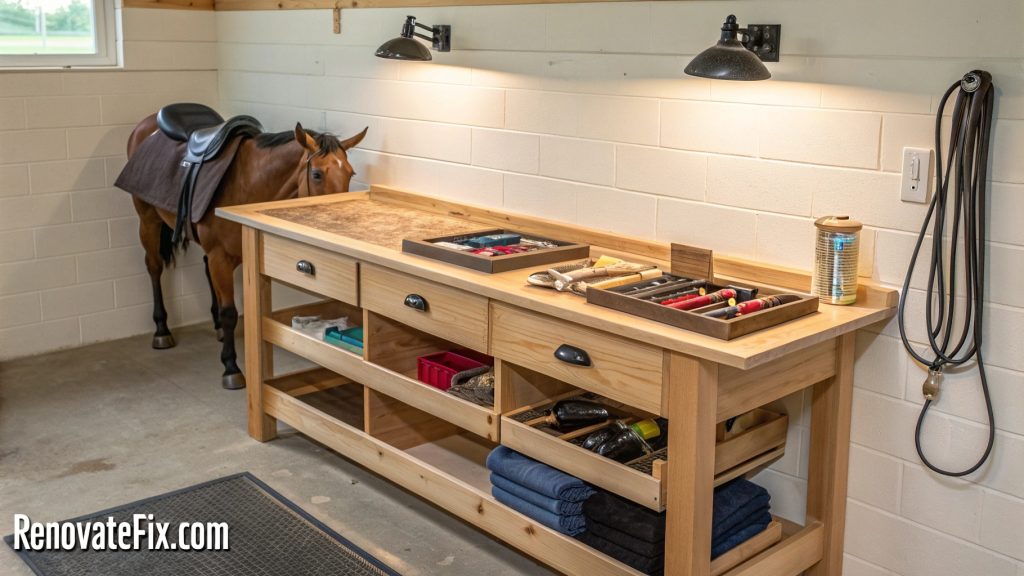
Shallow drawers store conditioners, cleaners, and application tools while protecting products from temperature extremes.
Surface protection prevents oil stains on workbenches during intensive cleaning sessions.
Positioning near water sources facilitates proper rinsing procedures when necessary.
21. Documentation Centers
Create waterproof filing systems for storing competition records, registration papers, and health certificates.
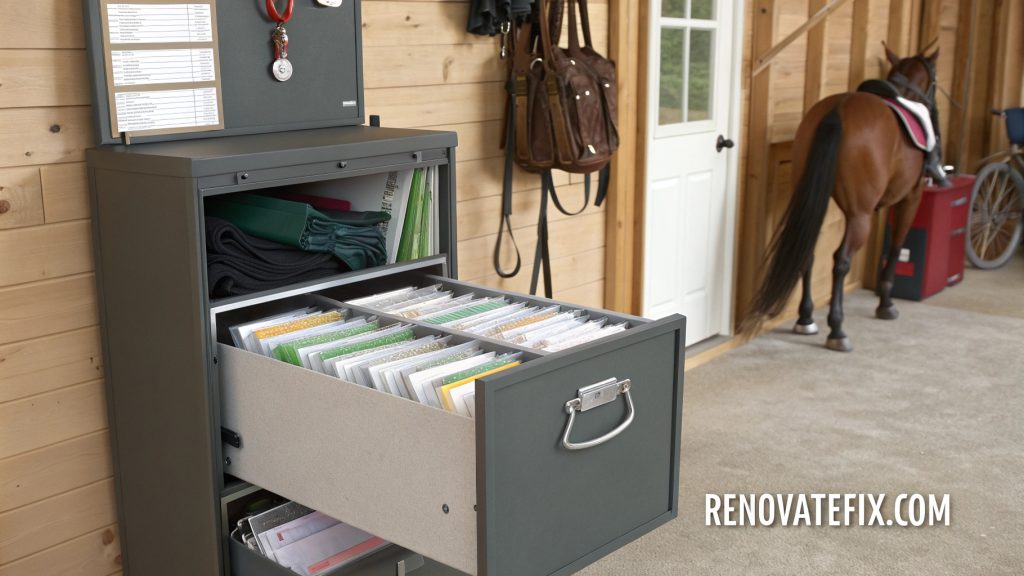
Dividing documents by category streamlines locating specific information during show preparation or veterinary visits.
Backup digital scanning ensures preservation of critical paperwork vulnerable to barn environment damage.
Prominent placement encourages regular updating after appointments or competitions.
22. Stick-On Cord Organizers
Apply adhesive cable management clips along walls for securing electrical cords from clippers, fans, or lighting.
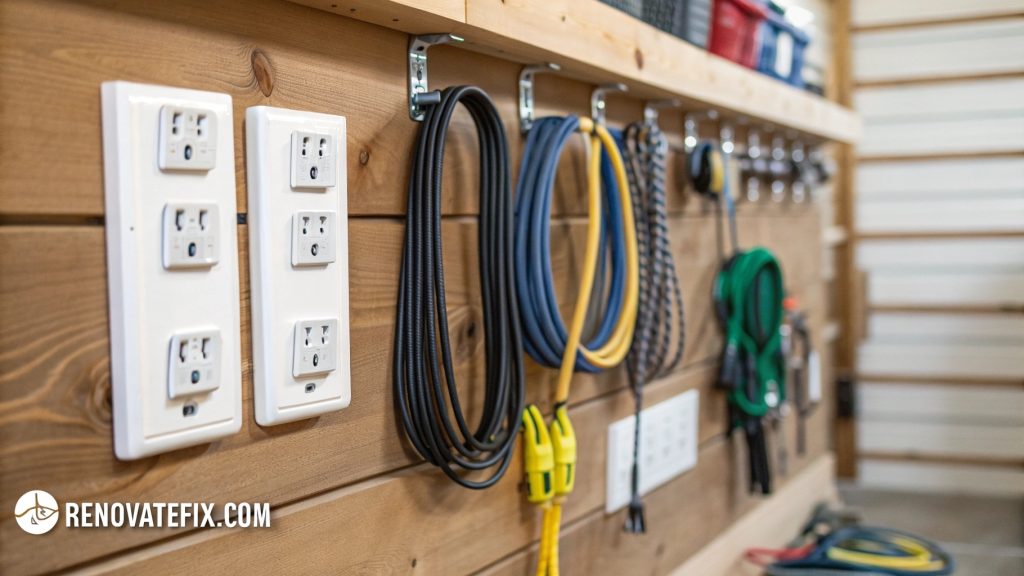
Raising cords off floor areas prevents tripping hazards common in busy barn environments.
Consistent routing maintains neat appearance while protecting wiring from damage by hooves or equipment.
Positioning clips strategically eliminates slack without straining connections at outlets.
23. First Aid Kits
Assemble comprehensive medical supplies in transparent, portable containers clearly marked for emergency situations.

Dividing internal compartments by function speeds locating specific items during stressful moments requiring quick response.
Regular inventory checks ensure expired medications get replaced promptly maintaining kit effectiveness.
Mounting kits near barn entrances provides immediate access during emergencies.
Conclusion
A thoughtfully organized tack room serves as the command center for any equestrian operation.
By implementing these practical storage solutions, you can create a space that not only protects your valuable equipment but also enhances daily efficiency.
Start with the ideas that address your most pressing challenges, then gradually incorporate additional elements as time and budget allow.
A well-organized tack room reflects your commitment to quality horsemanship and creates a positive impression for everyone who visits your stable.

